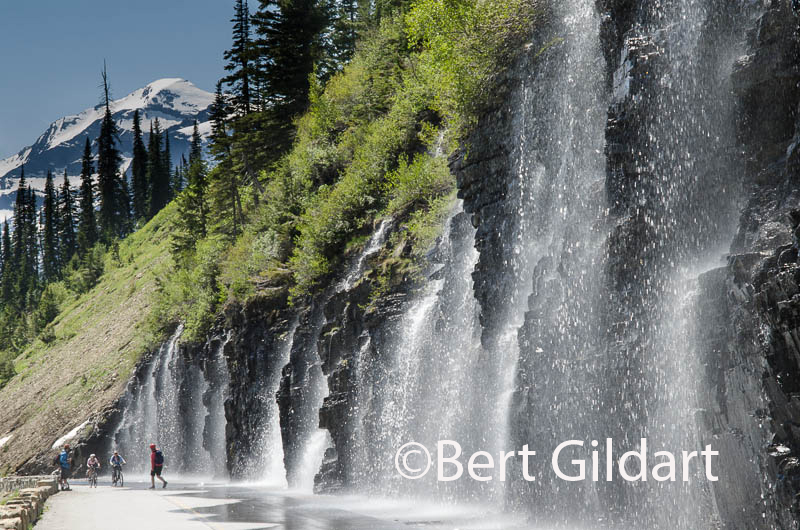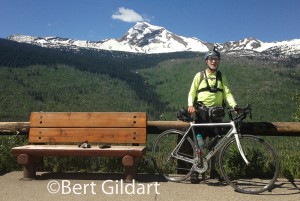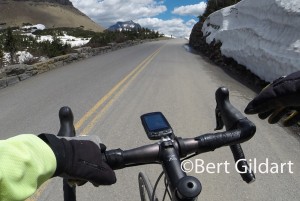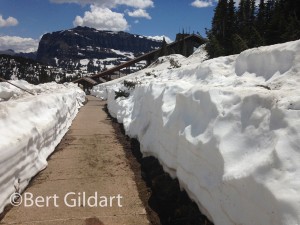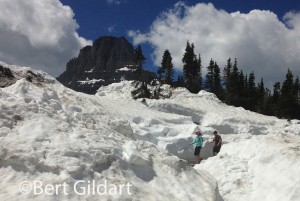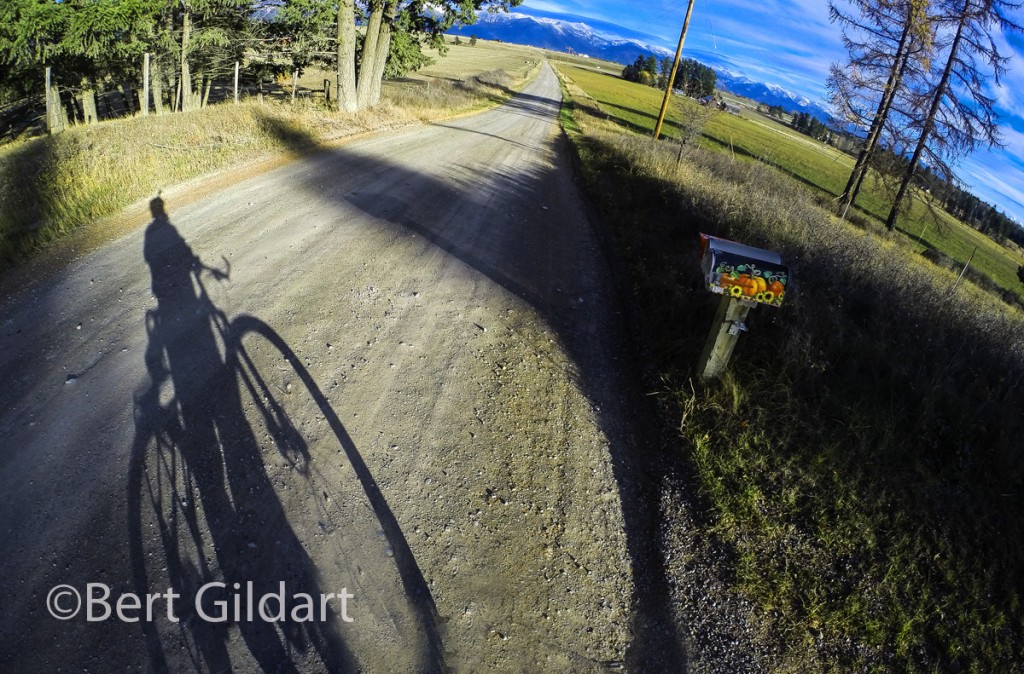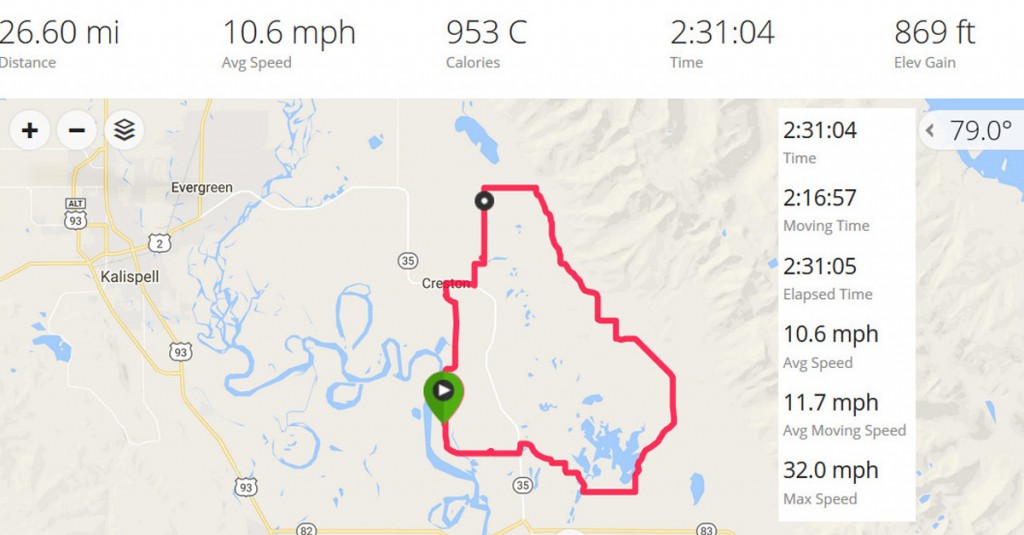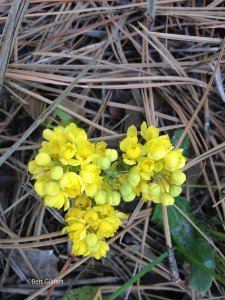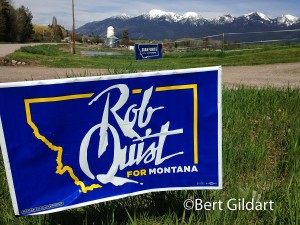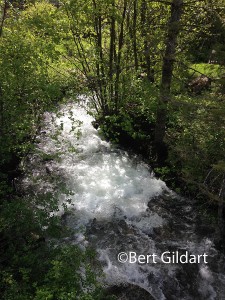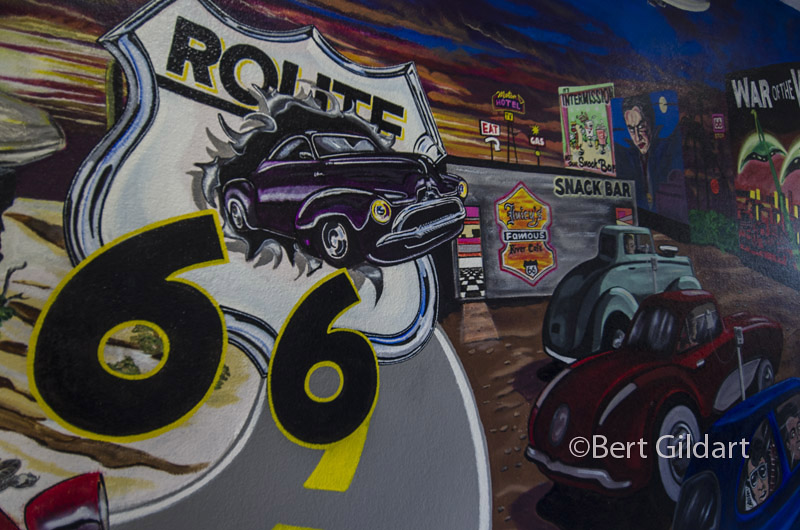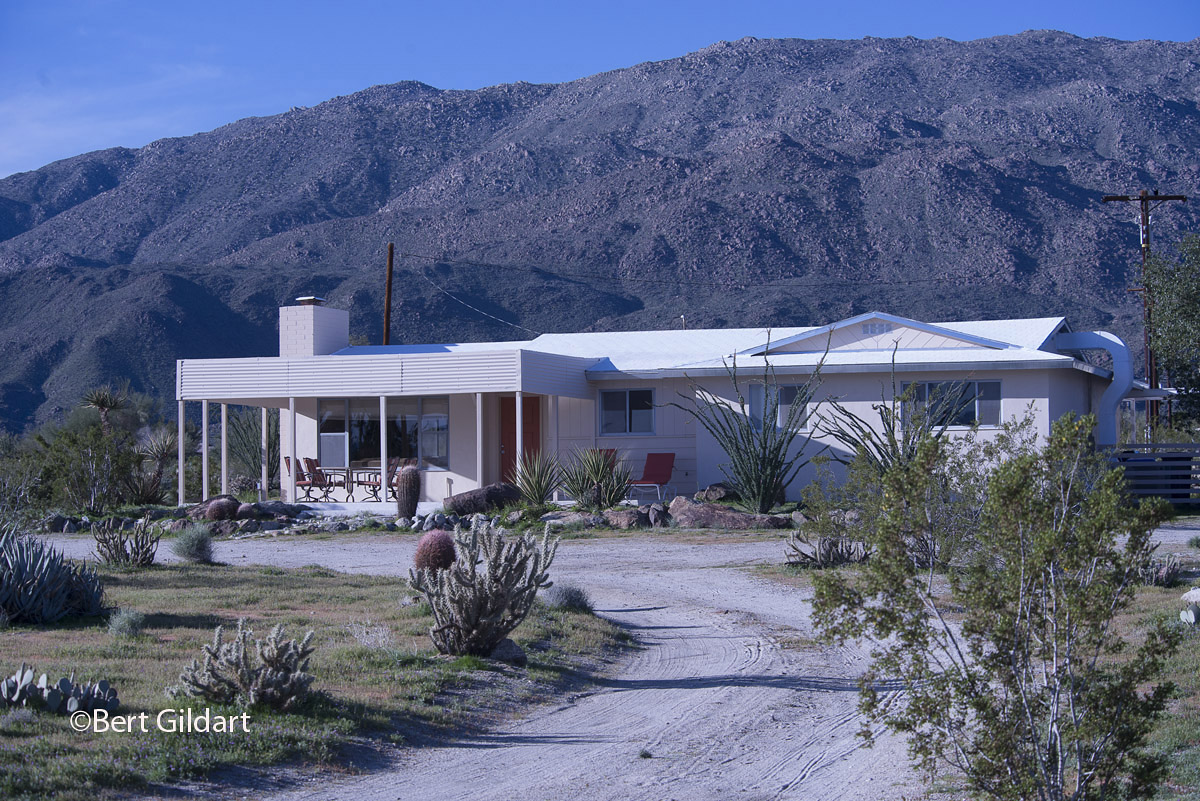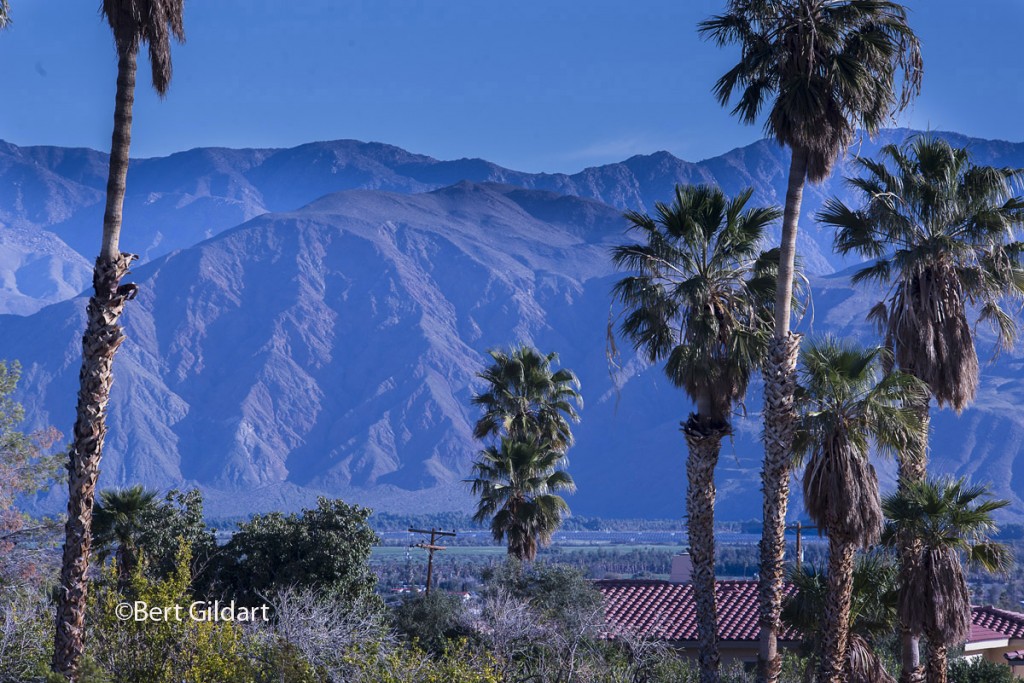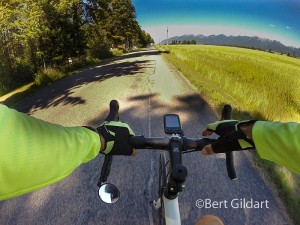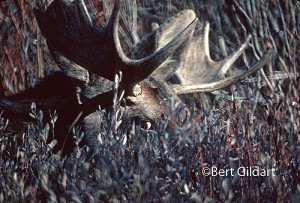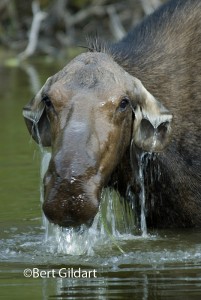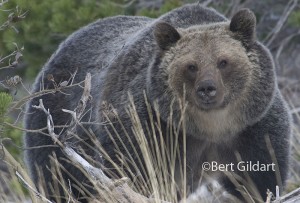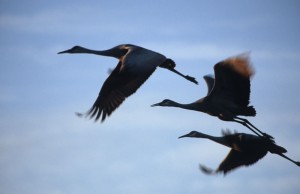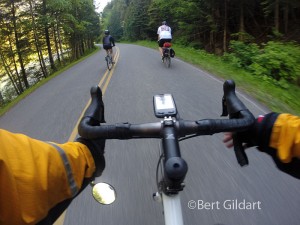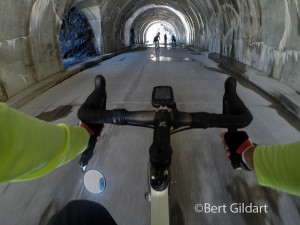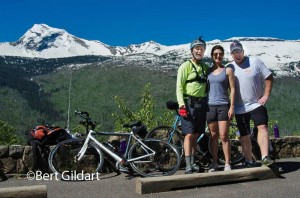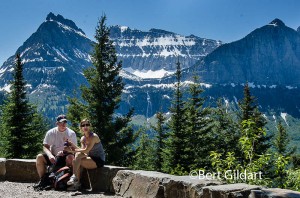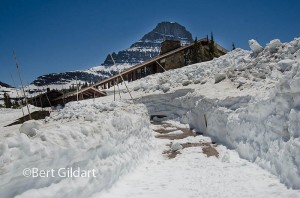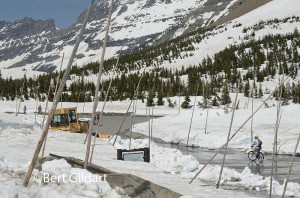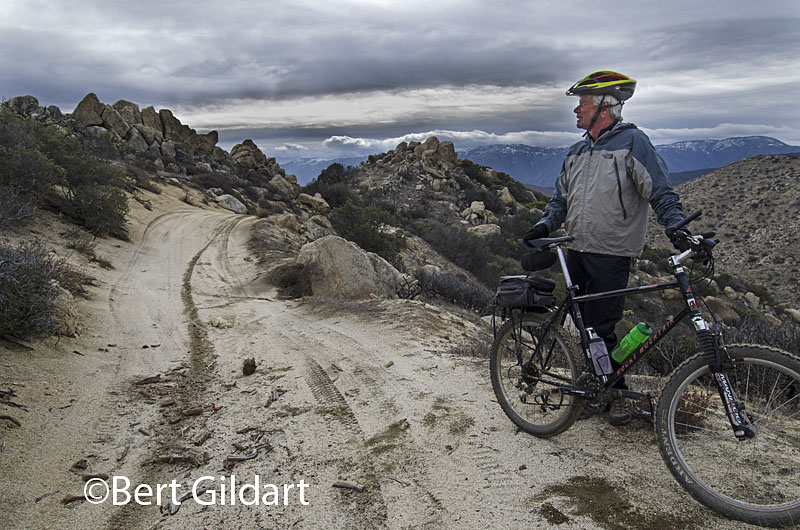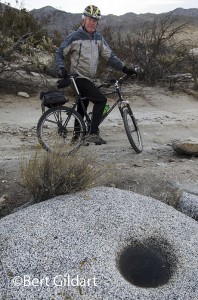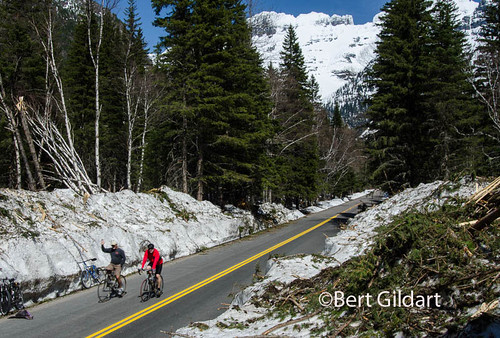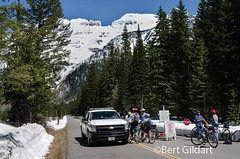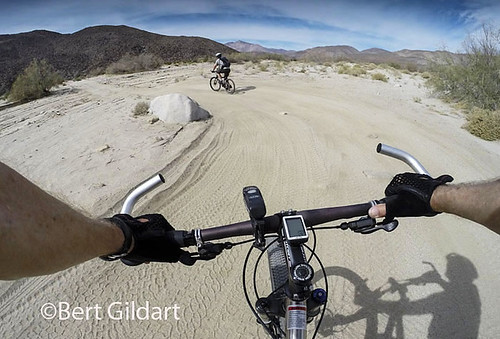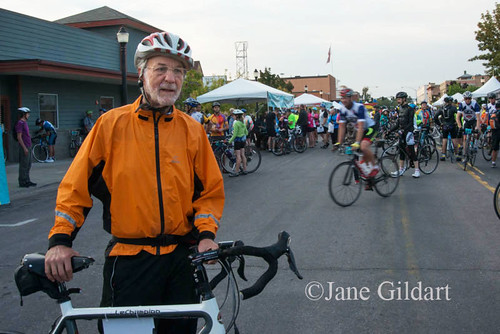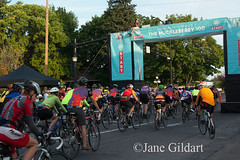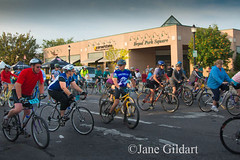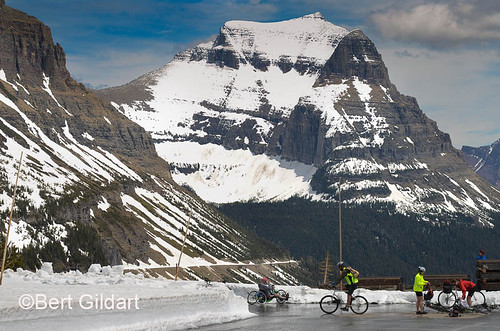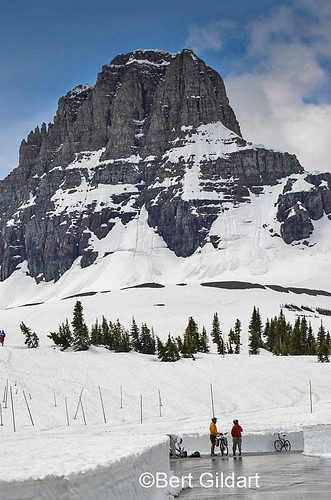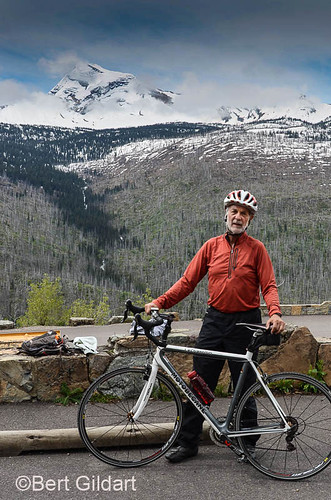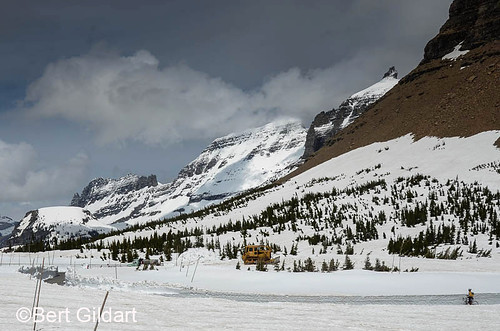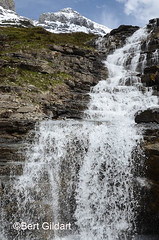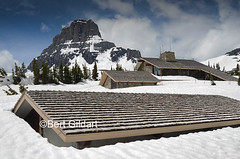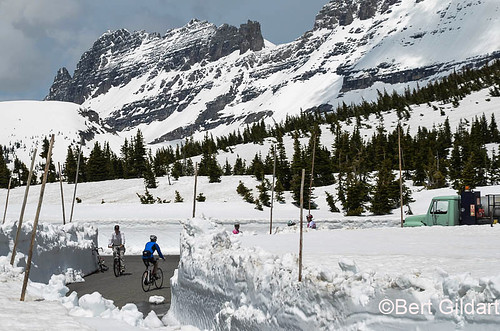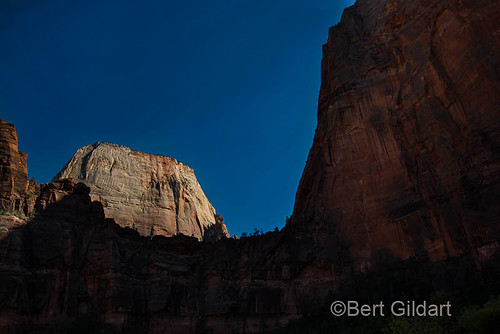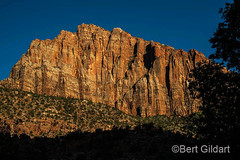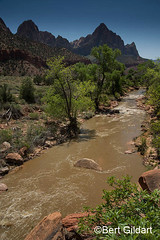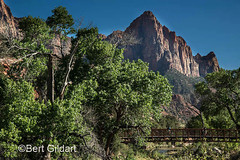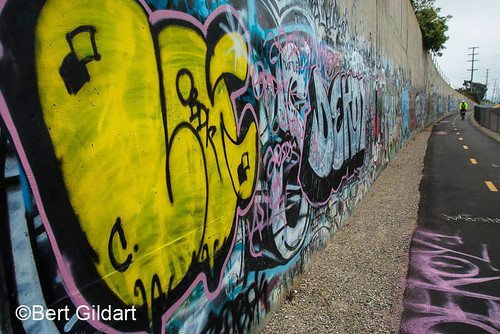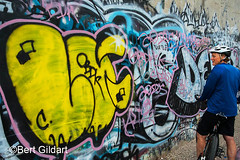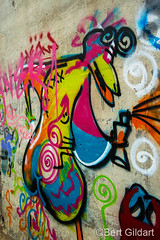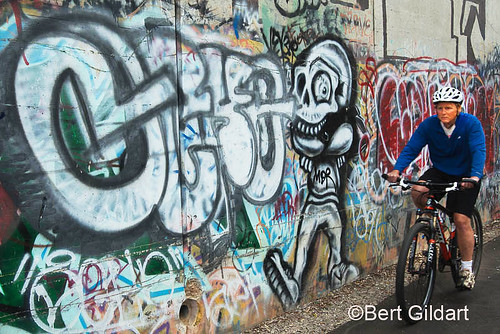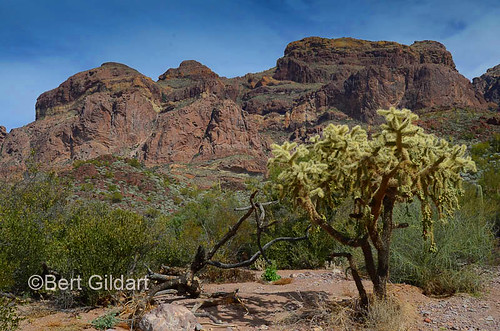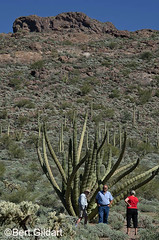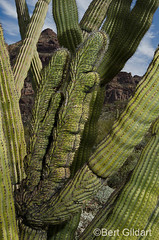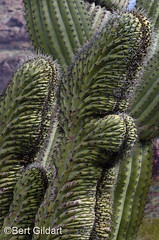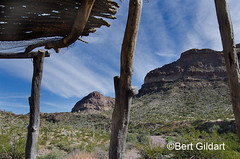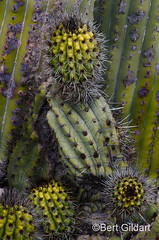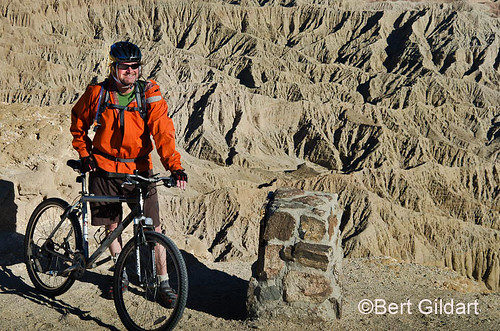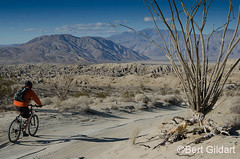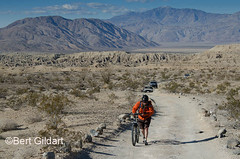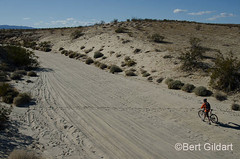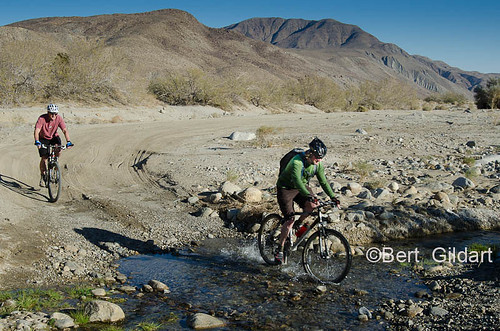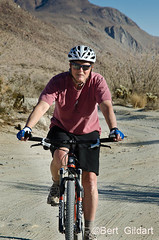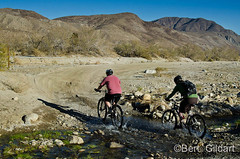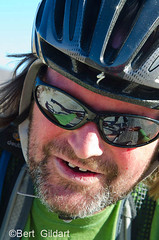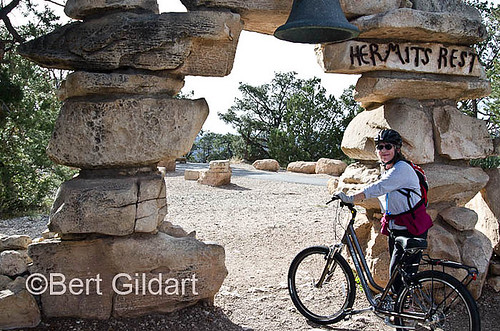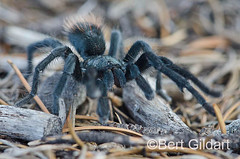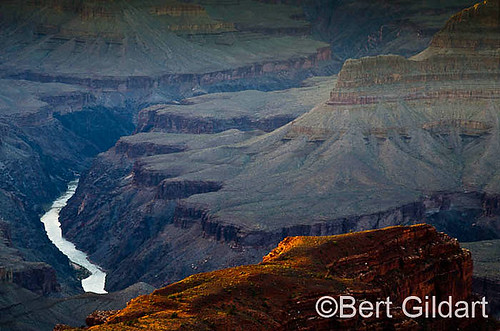©Bert Gildart: Yesterday, Photographer Ron Niebrugge and I biked about six miles from the Indian Hill Trailhead to a point known as the Goat Canyon Trestle. We followed a railroad work path that paralleled a set of historic tracks and railroad line. Our route took us through dark tunnels, over lofty trestles and along a path that was sometimes strewn with rocks and railroad ties that we had to “leap.”
Our destination, Goat Canyon Trestle, was built in 1932 after an earthquake collapsed one of the tunnels of the Carrizo Gorge section of the San Diego and Arizona Railway. At 200 feet tall and 750 feet long, Goat Canyon Trestle remains the longest, tallest curved wooden trestle ever built in the United States. Impressive as it may be, the route came to be known as the “Impossible Railroad.”
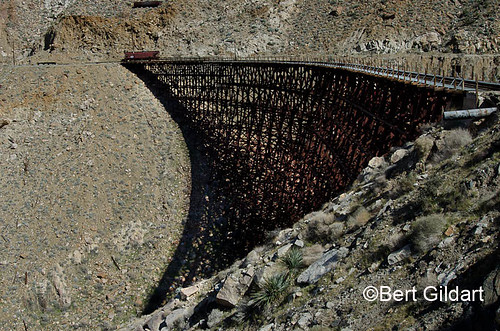
Longest, tallest curved wooden trestle ever built in the United States. But it is remote!
For years the trestle has been a popular destination for both hikers and bikers. It is popular because movie scenes have been filmed here, meaning Carrizo Gorge has to be spectacular. Nevertheless, the railroad company has at times imposed travel restrictions, though I’ve had difficulty determining what those might be today.
Prior to our departure I found that in 2008 Railroad Police had posted an internet “trespass notice.” But in the interim the route has been much traveled, so it wasn’t until we reached Goat Canyon that I finally saw a “No Trespass” sign, and it was riddled with bullet holes.
WHY BIKE?
People such as Ron and I bike to such areas for the scenic rewards and for the area’s interesting history. If indeed the area is closed, it should be opened as it provides access to some of the desert’s most beautiful scenery.
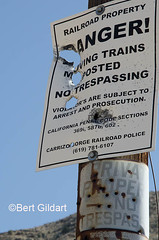
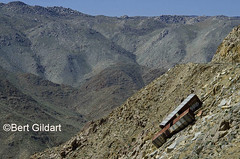


L TO R: Sign near one of trestles in Carrizo Gorge (Hard to read isn’t it??); final resting spot for freight cars that “jumped” tracks; biker passing through tunnel; bike rider crossing grating of trestle.
That said, we also concluded the Railroad had reasons they might want to exempt themselves from mishap.
To access the trestle you must pass through magnificent Carrizo Gorge, but in places steep terrain abuts the path, meaning the slightest mis-turn of your handle bars could propel you on a most unpleasant journey. In such places, I dismounted and found a secure detour by walking the railroad tracks.
TUNNELS AND TRESTLES
As we rode we passed through four tunnels and an equal number of trestles. Obviously the trestles provided a route for trains but they also provided a route for us. And here’s another place bikers need to pay attention. Wire grating flanks the railroad tracks and though the grating measures four feet and is certainly wide enough to accommodate a bike the narrow passage was unnerving to me.
Though Ron pumped ahead, I dismounted several times when the wind blew. However, on the way back I’d acquired my sea legs and learned to rivet my attention on the grating — and not on the deep gorges over which the grating passed – and on which we rode.
FREIGHT CAR JUMPS TRACK
About midway on our ride we came to a spot where two huge freight cars had “jumped” the tracks, then slid down the embankment. Obviously the mishap resulted in huge financial losses for a company whose business must be marginal.
In the early years of the train’s history, lines moved passengers by day and freight by night, but as years passed, improved transportation, wars and maintenance problems brought an end to the train’s operations. More recently these rails have been used for transporting sand and lumber and for the transporting of other goods between the U.S. and Mexico. But time seems to have taken its toll and we found places where gratings were held together with rope, and where boards have weathered away. Little wonder the Impossible Railway seems to be discouraging use. Trespass signs are a way of exempting themselves from legal entanglements.
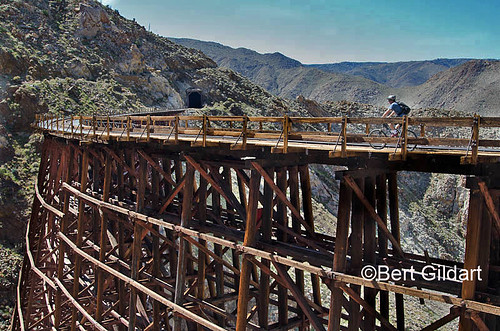
Biker riding over Goat Trestle
Today, it appeared to Ron and me that much of the infrastructure should be repaired, so predicting the future seems difficult. But, in Montana and in Idaho, I’m familiar with the wonderful mountain bike routes railroads have created from former lines. Ancillary businesses have evolved making it a win-win proposition for almost everyone. In the meantime, hiking guides offer challenging routes to Goat Trestle.
Whatever the future may hold for these rails Ron and I both concluded that our ride along the route of the Impossible Railroad will always rank as one of the best mountain bike trips – ever!
NOTE: In my next blog I’ll post a few more images from the “Impossible Railroad.”
——————
THIS TIME THREE YEARS AGO:
*Tour By Anza Borrego’s Retired Superintendent Mark Jorgensen
————-
4th ed. Autographed by the Authors
Hiking Shenandoah National Park
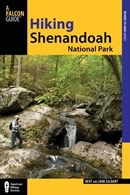 Hiking Shenandoah National Park is the 4th edition of a favorite guide book, created by Bert & Janie, a professional husband-wife journalism team. Lots of updates including more waterfall trails, updated descriptions of confusing trail junctions, and new color photographs. New text describes more of the park’s compelling natural history. Often the descriptions are personal as the Gildarts have hiked virtually every single park trail, sometimes repeatedly.
Hiking Shenandoah National Park is the 4th edition of a favorite guide book, created by Bert & Janie, a professional husband-wife journalism team. Lots of updates including more waterfall trails, updated descriptions of confusing trail junctions, and new color photographs. New text describes more of the park’s compelling natural history. Often the descriptions are personal as the Gildarts have hiked virtually every single park trail, sometimes repeatedly.
$18.95 + Autographed Copy
Big Sky Country is beautiful
Montana Icons: 50 Classic Symbols of the Treasure State
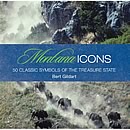 Montana Icons is a book for lovers of the western vista. Features photographs of fifty famous landmarks from what many call the “Last Best Place.” The book will make you feel homesick for Montana even if you already live here. Bert Gildart’s varied careers in Montana (Bus driver on an Indian reservation, a teacher, backcountry ranger, as well as a newspaper reporter, and photographer) have given him a special view of Montana, which he shares in this book. Share the view; click here.
Montana Icons is a book for lovers of the western vista. Features photographs of fifty famous landmarks from what many call the “Last Best Place.” The book will make you feel homesick for Montana even if you already live here. Bert Gildart’s varied careers in Montana (Bus driver on an Indian reservation, a teacher, backcountry ranger, as well as a newspaper reporter, and photographer) have given him a special view of Montana, which he shares in this book. Share the view; click here.
$16.95 + Autographed Copy
What makes Glacier, Glacier?
Glacier Icons: 50 Classic Views of the Crown of the Continent
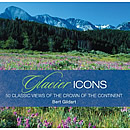 Glacier Icons: What makes Glacier Park so special? In this book you can discover the story behind fifty of this park’s most amazing features. With this entertaining collection of photos, anecdotes and little known facts, Bert Gildart will be your backcountry guide. A former Glacier backcountry ranger turned writer/photographer, his hundreds of stories and images have appeared in literally dozens of periodicals including Time/Life, Smithsonian, and Field & Stream. Take a look at Glacier Icons
Glacier Icons: What makes Glacier Park so special? In this book you can discover the story behind fifty of this park’s most amazing features. With this entertaining collection of photos, anecdotes and little known facts, Bert Gildart will be your backcountry guide. A former Glacier backcountry ranger turned writer/photographer, his hundreds of stories and images have appeared in literally dozens of periodicals including Time/Life, Smithsonian, and Field & Stream. Take a look at Glacier Icons
$16.95 + Autographed Copy
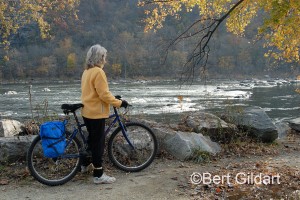
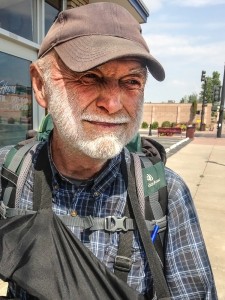
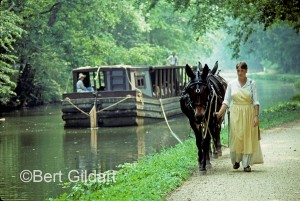
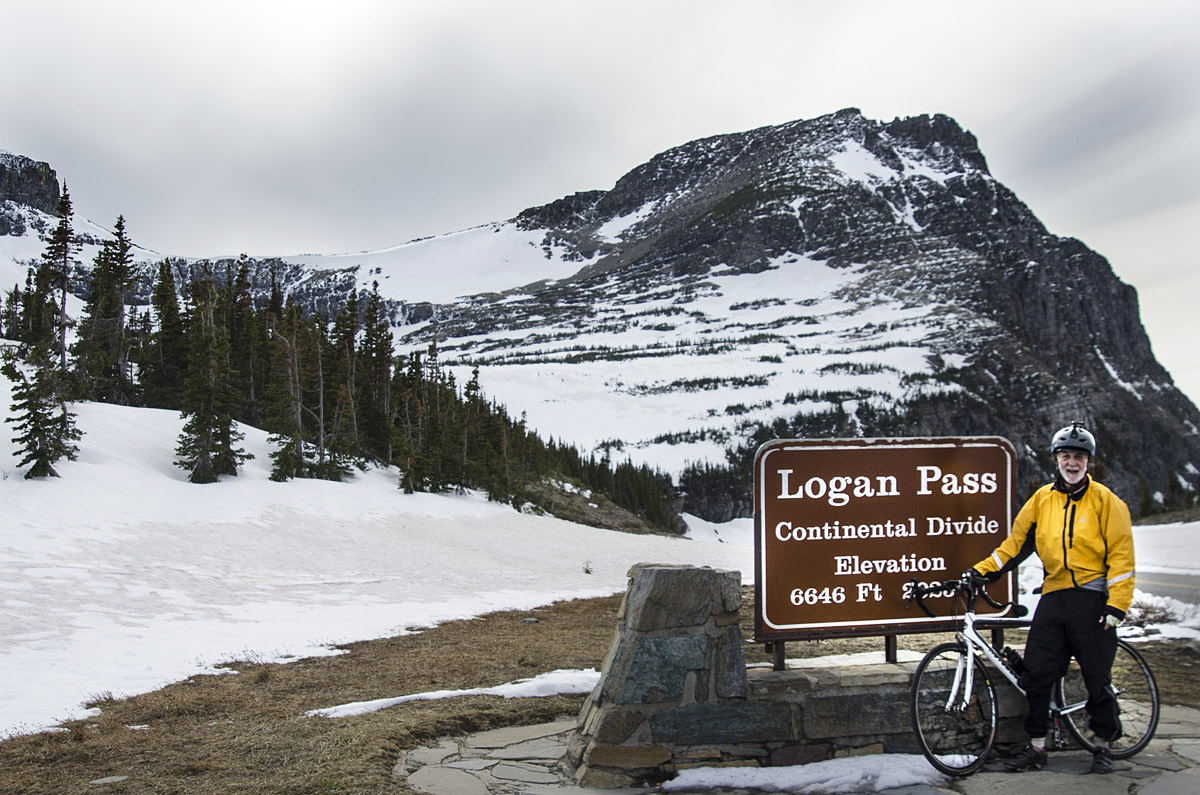

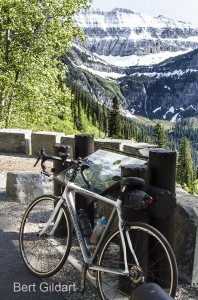

 Hiking Shenandoah National Park is the 4th edition of a favorite guide book, created by Bert & Janie, a professional husband-wife journalism team. Lots of updates including more waterfall trails, updated descriptions of confusing trail junctions, and new color photographs. New text describes more of the park’s compelling natural history. Often the descriptions are personal as the Gildarts have hiked virtually every single park trail, sometimes repeatedly.
Hiking Shenandoah National Park is the 4th edition of a favorite guide book, created by Bert & Janie, a professional husband-wife journalism team. Lots of updates including more waterfall trails, updated descriptions of confusing trail junctions, and new color photographs. New text describes more of the park’s compelling natural history. Often the descriptions are personal as the Gildarts have hiked virtually every single park trail, sometimes repeatedly.